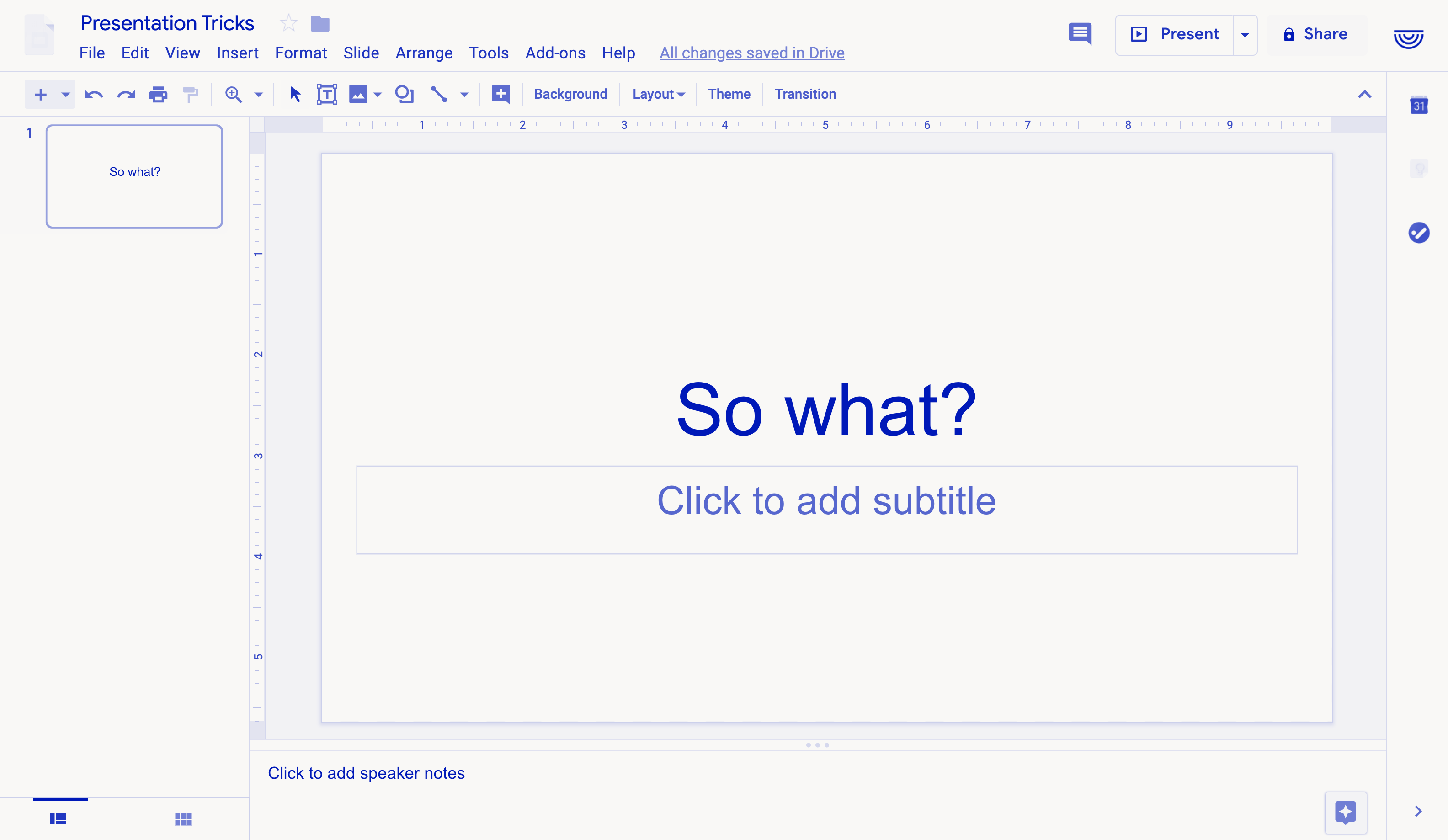on
The Two-Word Hack To Better Presentations

Presentations matter. They are an opportunity for you to tell your story. Storytelling is like magic to a human mind, and as such your presentation can be too. It’s easy to end up in a situation where you don’t want to be—especially when you’re knee deep into PowerPoint’s design tools. There are many ways to mitigate that situation from happening, but the one thing I use most is simply asking myself “So what?” as much as possible.
At two words, it’s a pretty simple phrase, but that doesn’t mean it’s not powerful. This question acts as a proxy forcing you to consider your audience’s perspective, agnostic of the specific context. This helps me keep my “user” in mind and ensure the points I’m making aren’t just ones I want to make, but ones (hopefully 🤞) my audience will find value in. (Testing the presentation is the only way to truly know if an audience will value it)
In Use
Initially, during the early planning phase, it helps me determine what’s even important to cover. For instance, maybe I’m considering responding to a design conference’s CFP and debating submitting a response on the challenges of remote work or one on the evergreen challenges of sourcing research participants. So what? Well, the former is timely but may seem self-apparent, the latter could be gold, but only to the right audience because everyone wants a silver bullet. In this case “So what?” helped me better assess my considered topics and evaluate them against the relevance of the potential conference audience.
Secondly, once you’re working on the story itself, say CFP topic was chosen from before, or more likely you just have a thing you need to present internally at work, “So what” can help you determine what to include and what’s important to highlight about it. For instance, you’re presenting on a project’s status to your boss and there’s been a lot of challenges with it lately, but with all the setbacks it still seems on-track. As you start to plan your story, it will be easy to be caught up in the current low-level happenings that have you focused on a singular detail that’s been nagging, but So what? Your manager may (or may not) care about that detail, but what they will want to know is if the project is on or off track, and by how much. In this case, that detail is likely only one element of a larger set of elements used to evidence your assessment of the project’s status.
Finally, as I actually start to build out the slides themselves it can be difficult to find the balance. I’ll either add too much info per slide, ending up with tons of filler slides that don’t convey much or a handful of dense slides that are hard to guide an audience through. In this case, it helps ensure the content on the slide is as compelling as possible. For instance, if I’m presenting research findings, it would be easy to show some singular quantitative finding from a survey, but So what? The answer could be that I should show other data for reference, maybe the same data point from a competitor or from a previous study to highlight the differences in our current findings and those others.
So What
In this way, it’s a flexible question that is always relevant. Working to have the answers to it will help not only ensure that the story is a great one, but that you are ready with answers to a breadth of possible questions from the audience. (Because remember, it will help you think through the audience’s perspective—which is generally, how does this apply to me). That’s a lot of value from something as lightweight as two words, so consider keeping this one handy.
Think this is brilliant or absurd? Let me know @_dominicp